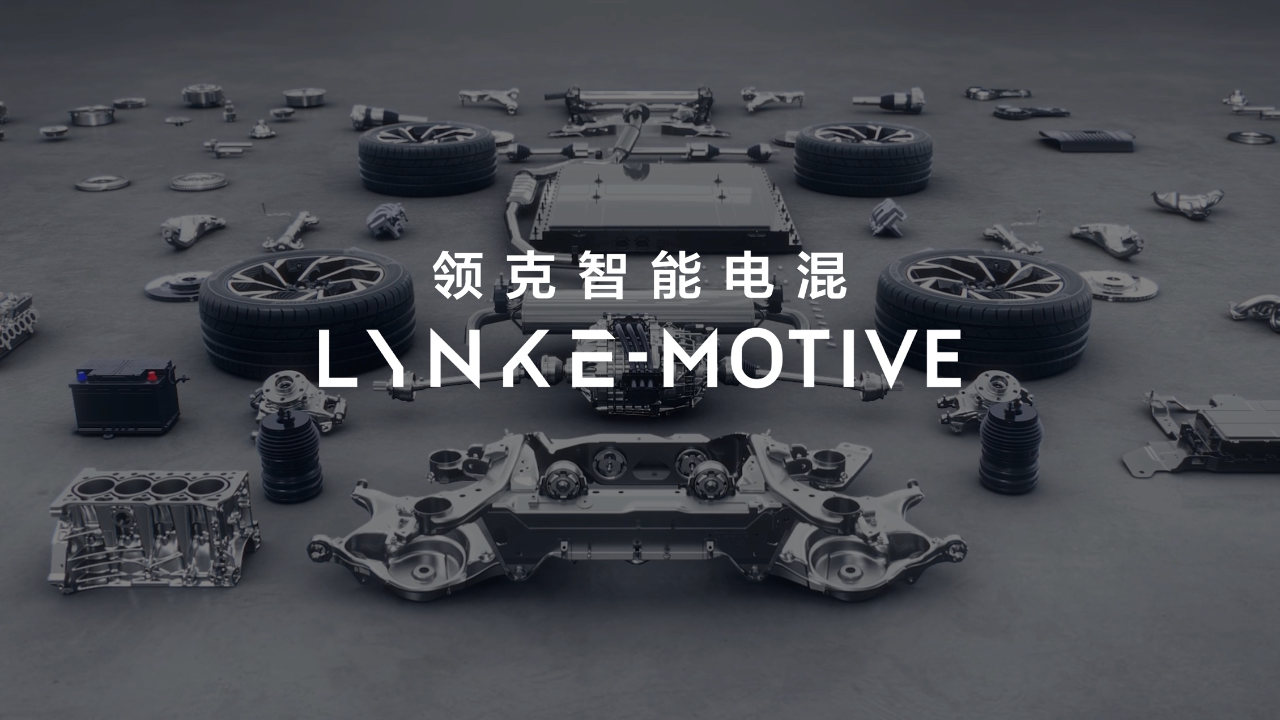Author: Zhang Yi
Under the strong rise of pure electric new forces, most of the hybrid vehicles in the field are average in energy-saving but not in performance and carry a lack of intelligence; they have new technologies but less cutting-edge products. Thus, hybrid cars are often in an embarrassing situation and are usually not as popular as pure electric ones.
However, with the rise in oil prices and the end of government subsidies for pure electric cars, the advantages of hybrid cars over pure electric ones are gradually becoming apparent, and they are expected to become a new growth point. It is reported that from January to April this year, the cumulative sales of pure electric vehicles increased by nearly 98% year-on-year. On the other hand, the sales growth rate of PHEV (Plug-in hybrid electric vehicle) reached 176%, surpassing pure electric cars for the first time.
Redefining Hybrid Cars
On June 6th, at the Spring-Summer launch, Lynk & Co. introduced the intelligent electric-hybrid Lynk E-Motive based on the Thunderbolt intelligent hybrid technology platform. At the same time, they read the current hybrid vehicle market.
Lynk & Co. believes that the development trend of the next generation of automobiles lies in intelligent and electrification. The point and foundation of hybrid cars are not just about the competition between pure electric and hybrid cars. Rather, electrification and intelligentization are the main elements of hybrid vehicles. Pure electric and hybrid cars are just the methods and processes to achieve this goal.
Regarding the consumer groups, the consumer groups for hybrid and pure electric cars overlap to a great extent and are both aimed at the same group of people, namely young consumers born after 1990. According to J.D.POWER’s data, the young generation’s interest in intelligent technology for new energy vehicles is 13.4% higher than other groups. They also have an expectation for higher vehicle performance at 11.6% than other groups.
Currently, pure electric brands often excel in intelligent connectivity while having excellent driving performance and outstanding appearance, which perfectly meets young audiences’ needs. However, hybrid cars tend to follow the traditional route of fuel vehicles, lacking in innovation and personalized designs, which is one of the reasons for their lack of popularity in the market.
What Lynk & Co. wants to do is to break the stereotype of traditional hybrid vehicles and redefine what they should be. They aim to create a hybrid car that not only has energy-saving advantages, is intelligent and has an excellent driving experience, but also provides the benefits of traditional fuel vehicles, such as range anxiety, making it a cool and trendy hybrid vehicle.
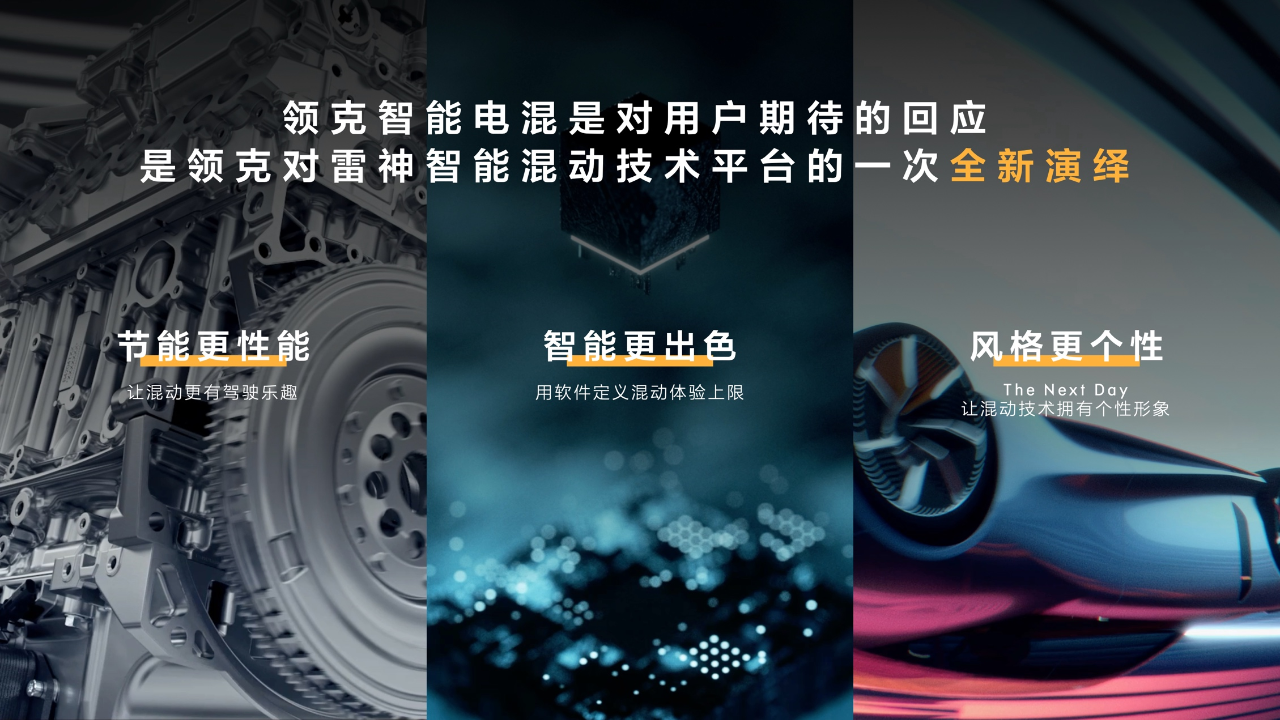
High Performance and Low Fuel Consumption, Experience is Key
Backed by Geely, it is undeniable that Lynk & Co. has profound expertise in hybrid technology. For example, the Lynk E-Motive launched this time includes three high heat-efficient and high-performance hybrid engines, two high-efficiency hybrid transmissions, and two power forms, M-F (HEV) and EM-P (PHEV).
Based on ultra-efficient measures, the EM-F model equipped with the Lynk & Co intelligent hybrid technology has a WLTC fuel consumption of only 4.5 liters per 100 kilometers, with a fuel saving rate of up to 40%. The EM-P model, on the other hand, has a WLTC power consumption of only 5.1L per 100 kilometers.
The Thor plug-in hybrid platform was released by Geely on October 31, 2021. In its promotion, Geely uses the exaggerated expression “Thor is here” to showcase the disruptive and technological content of this platform. The Lynk & Co E-Motive 1.5TD hybrid dedicated engine is based on this technology platform.
On this hybrid technology platform, the main hybrid engine can have a thermal efficiency of 43.32%. As we all know, the thermal efficiency of the engine is one of the core parameters to measure the performance of an engine. Higher thermal efficiency represents higher fuel efficiency, lower fuel consumption, and fewer carbon emissions.
Under the call and demand for energy conservation and emission reduction, improving thermal efficiency is definitely the first step towards energy conservation.
Currently, the thermal efficiency of the engines commonly seen on the market is mostly below 40%. The hybrid thermal efficiency of Japanese cars, the pioneer of energy conservation and emission reduction, is up to 41% at most. Therefore, 43.32% thermal efficiency is indeed a very powerful number. It could be said that this is the ceiling of the thermal efficiency of the engine at present, and there are no other hybrid engines that can surpass it.
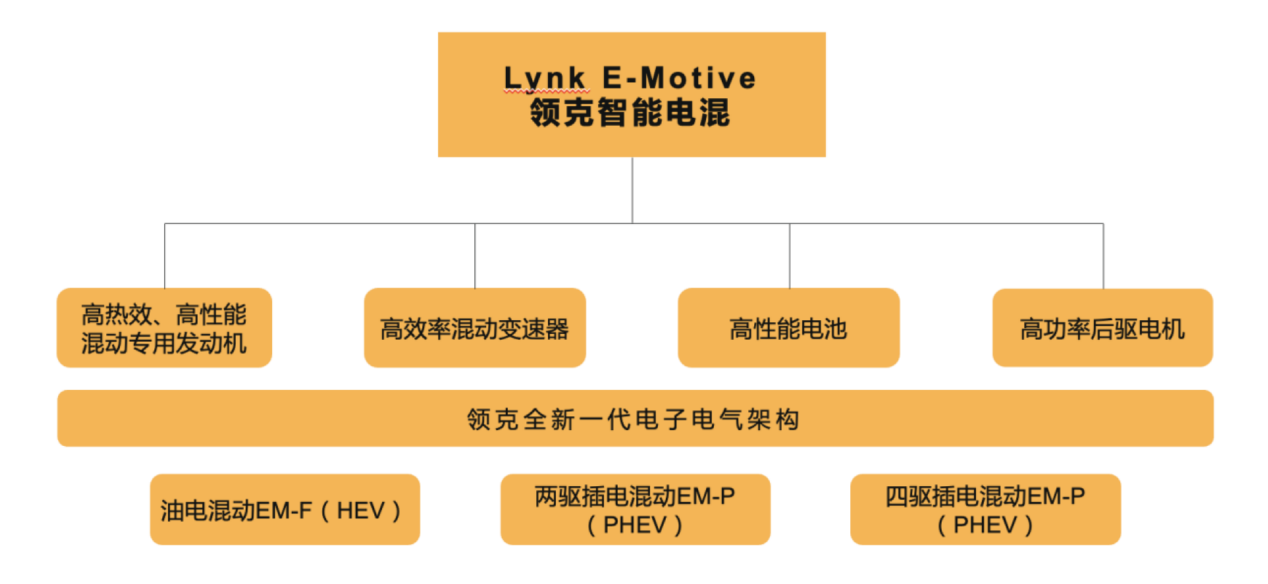
Another highlight is its three-speed hybrid transmission. It combines the industry-leading hybrid transmission technologies such as dual-clutch and dual planetary gear sets, with the highest mechanical efficiency of up to 97.5%. And it can achieve parallel hybrid in the full-speed range.
According to the patent application for a dual-motor multi-speed hybrid power transmission system submitted by Geely in August last year, two electric motors, P1 and P2, are used in the hybrid system to achieve pure electric mode, hybrid mode, parallel mode, and power split mode.
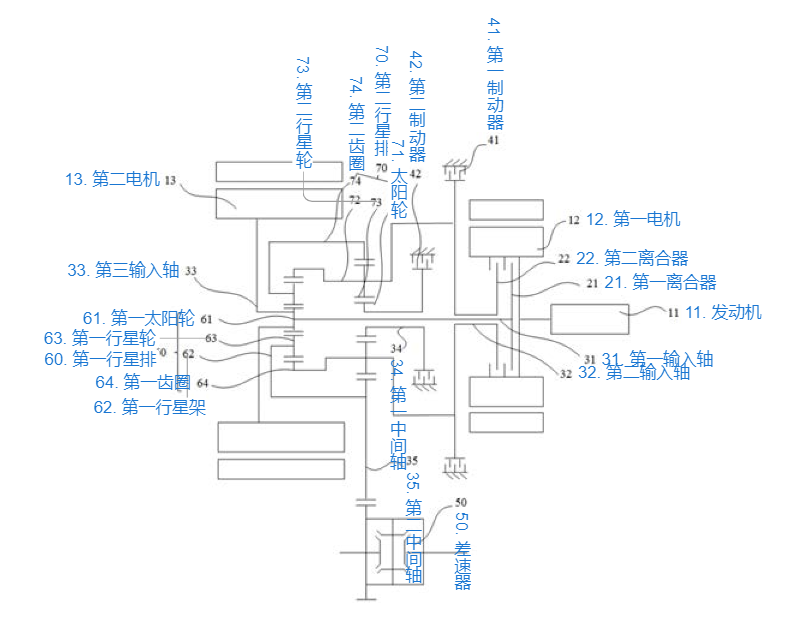
P1 motor is mainly responsible for power generation, and P2 motor is responsible for power output.
In pure electric mode, P1 motor does not work, and P2 motor is responsible for power output.
In series mode, P2 motor is used as the driving motor, consuming the battery for power output, and P1 motor is used to charge the battery.
In parallel mode, P1 motor does not work, and P2 motor consumes the battery for power output or charges the battery according to the power demand.In power distribution mode, P1 and P2 work at the same time. P2 motor serves as a power output, while P1 motor works as a generator to provide power for P2 motor.
Lynk E-Motive can enter parallel mode when the speed is above 20 km/h, allowing the engine and the motor to drive the vehicle at the same time. This is called full-speed parallel mode, which can make the engine work at the optimal economic point and enhance the performance of power transmission.
In addition, advanced technologies, including high-pressure direct injection, turbocharging and intercooling, Miller cycle, and low-pressure EGR, are employed in the 1.5TD hybrid dedicated engine. The maximum torque reaches 225N・m and the maximum power output reaches 110 kW.
At the same time, a 2.0TD hybrid dedicated engine is also launched. Its maximum power output is 185 kW and the maximum torque reaches 420N・m, surpassing same-displacement engines of luxury brands. While ensuring fuel economy, the performance of power is enhanced.
Thanks to the contribution of the powertrain system, Lynk E-Motive has stronger driving performance and can achieve a rocket start within just 5 seconds for accelerating to 100km/h. Compared with the performance of Japanese hybrid systems such as Toyota and Honda, whose zero-to-hundred acceleration time is around 7-9 seconds, its performance is impressive.
However, many consumers do not buy the 1.5TD three-cylinder engine due to its tendency to generate vibration and noise compared to a four-cylinder engine.
Nevertheless, some analysts argue that the ultra-high thermal efficiency of Lynk E-Motive owes much to the use of a three-cylinder engine.
To address the vibration issue, EGR exhaust gas recirculation system is employed to reduce gasoline concentration and detonation. As for noise, Lynk claims that its NVH performance is industry-leading. NVH stands for Noise, Vibration and Harshness, which is an abbreviation of various indicators, including vehicle noise, vibration and comfort.
For example, in the case of the Lynk 01 HEV model, the sound pressure level of the cabin during full-throttle acceleration and overtaking is about 60 decibels, which is equivalent to normal conversation. However, in its same-class competitors, the level is around 75 decibels, equivalent to the sound of a busy city street.
Full Intelligence# Lynk E-Motive Utilizes Next-Generation Electric Architecture in the Smart Electrical Field
In the smart electrification field, Lynk E-Motive adopts a new generation of electronic electrical architecture. The electronic electrical architecture of a car is like the brain and nervous system of a car and is the key to the intelligent development of a car. In the traditional automobile market, a distributed architecture of electronic control units (ECUs) is mostly used.
However, in the era of intelligent networked vehicles, as the number of ECUs exceeds a certain number, this architecture will result in an increase in a large number of CAN or LIN bus cable harnesses, which not only brings about an increase in weight and cost but also brings about complexity in the operation of the entire car electronic system as well as a reduction in design flexibility, all of which hinder the further development of intelligent networked vehicles.
Therefore, in order to reduce cable harnesses and increase design flexibility, the current trend in electronic electrical architecture is moving from distributed ECUs toward centralized ECUs and has produced an intermediate transitional phase, namely (cross) domain centralized, which is also the architecture adopted by most car manufacturers currently.
The new generation of electronic electrical architecture for Lynk is also a domain centralized architecture, primarily comprised of four domains: Intelligent Driving, Chassis, Body, and Cabin domains. However, traditional Japanese hybrid cars still rely on the earlier distributed ECU electronic electrical architecture.
The electronic electrical architecture is more about the hardware layout, and for a better intelligent experience, software upgrades are also essential. “Software-defined cars” has become a new trend in the development of automotive technology.
In the smartphone field, software and system updates are automatically upgraded through OTA. With the evolution of car electronics, cars have become more and more like intelligent smartphones and are more dependent on software support, requiring regular software updates and upgrades.
In the electronic electrical architecture comprised of the four domains of Intelligent Driving, Chassis, Body, and Cabin, Lynk has opened over 4,000 API nodes for OTA software upgrades, enabling users to continue using the latest technology.
However, excessive OTA software upgrades have also led some consumers to complain that it is difficult to obtain a “complete product” car. Although a new car is equipped with powerful hardware, the accompanying software is only in the early stages of development and was rushed to market, with more features and potential relying on subsequent OTA upgrades. Therefore, for consumers, the product in their hands is more like an unfinished product, which has caused criticism for some intelligent electric car brands. It is hoped that Lynk will not disappoint consumers in this regard.
In addition, Lynk E-Motive is also equipped with the currently most popular artificial intelligence AI. Through clustering algorithms, it can intelligently self-learn based on user driving behavior, judge driving styles, and intelligently adjust throttle response.## Astonishing Start
At the launch event, Lynk & Co unveiled a new energy-powered four-door GT model called The Next Day, which is extremely modern and futuristic, presenting the brand’s new design language.
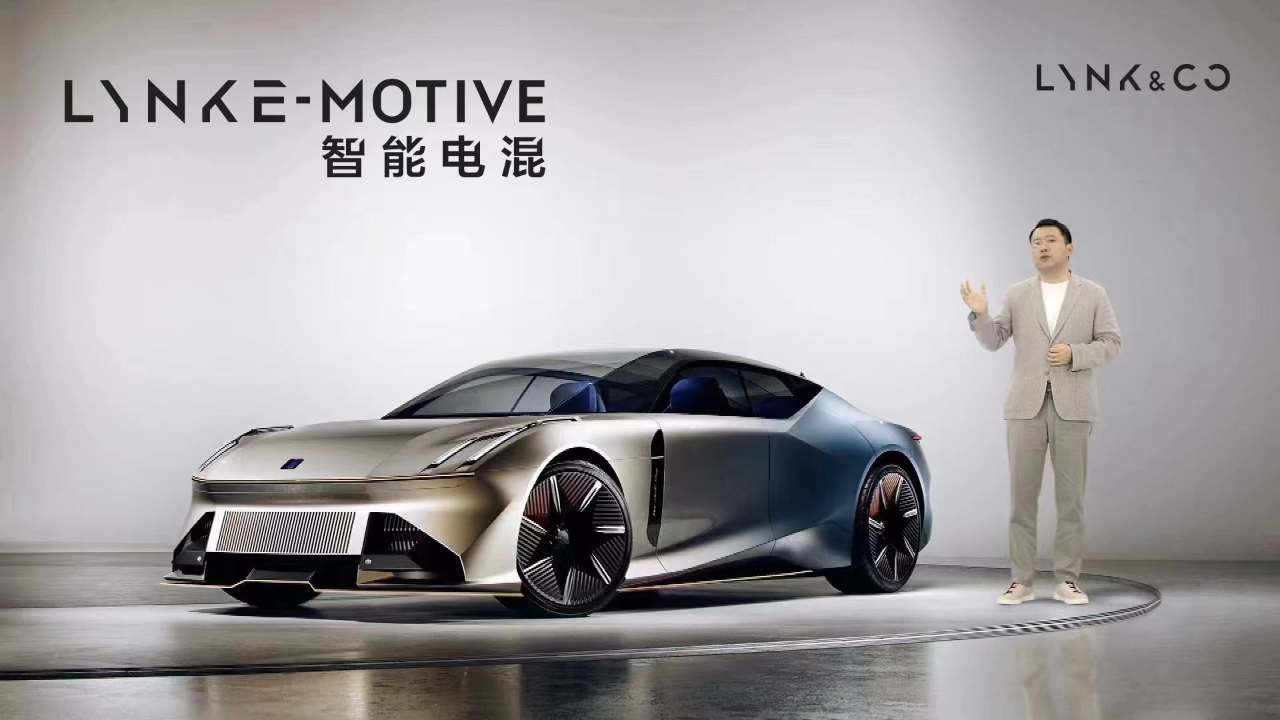
The entire car uses gradient paint design, taking inspiration from sunrise and presenting urban light and shadow changes from dawn to morning on the car body. Walking along the car body from the tail to the head, you will feel as if you are greeted by the sun shining like the light of dawn, breaking through the darkness, and coming day by day.
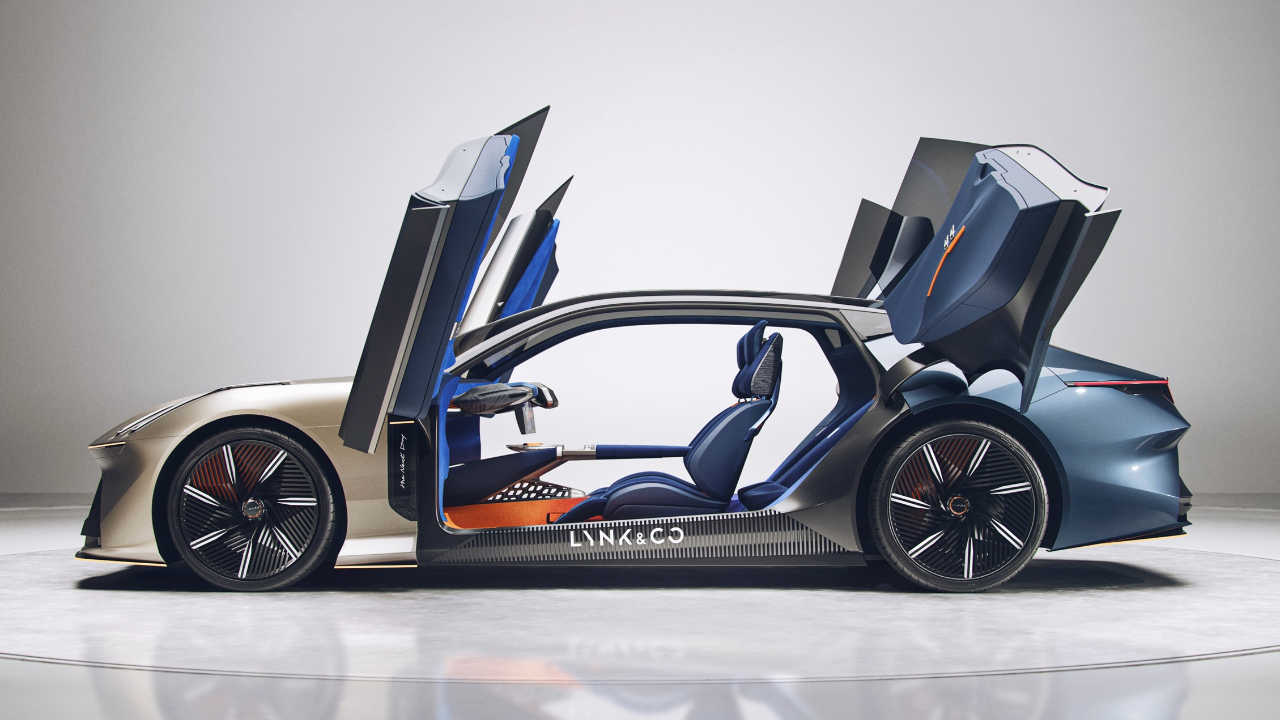
The gradient paint from Sunrise Gold to Dawn Blue has been crafted by the world’s top spray technicians at a cost of hundreds of hours, going through 10 processes. It presents the fusion of urban diversity and the artistic conception of sunrise, bringing a super-modern, technological, and dreamlike feeling. This aesthetic design is reflected in the details, and is consistently exquisite.
The daytime running lights at the front of the car have evolved from Lynk & Co’s first-generation design, the Arctic Light Daytime Running Light, appearing flatter and sharper. At the back, there is an integrated active spoiler and a through-type intelligent gradient light. With a retractable technology belt, the design and functionality are perfectly integrated, equipped with powerful and cleverly hidden features, allowing the entire car to “move.”
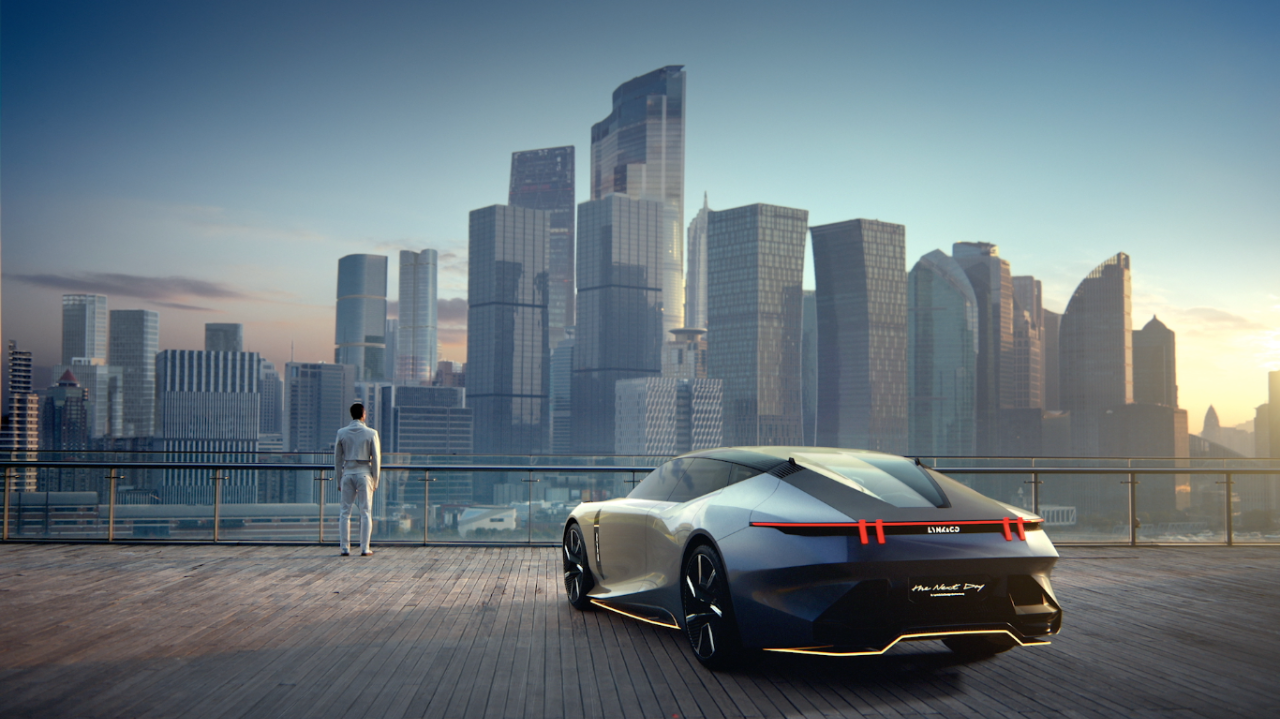
The glass atop the car uses diamond cutting technology, seamlessly integrating front and rear windshields into a single piece of glass, symbolizing the boundless sky that can be touched.
The body features a carved peak line of the dawn, reflecting the stereoscopic light and shadow of the mountain top at dawn on the side of the car.
In addition, the aerodynamic hub with sharp and intricate cutting inspired by black diamonds, the denim fabric suspended dashboard, and the velvet zero-gravity seats all embody a sense of technological and dreamy feeling and noble elegance.
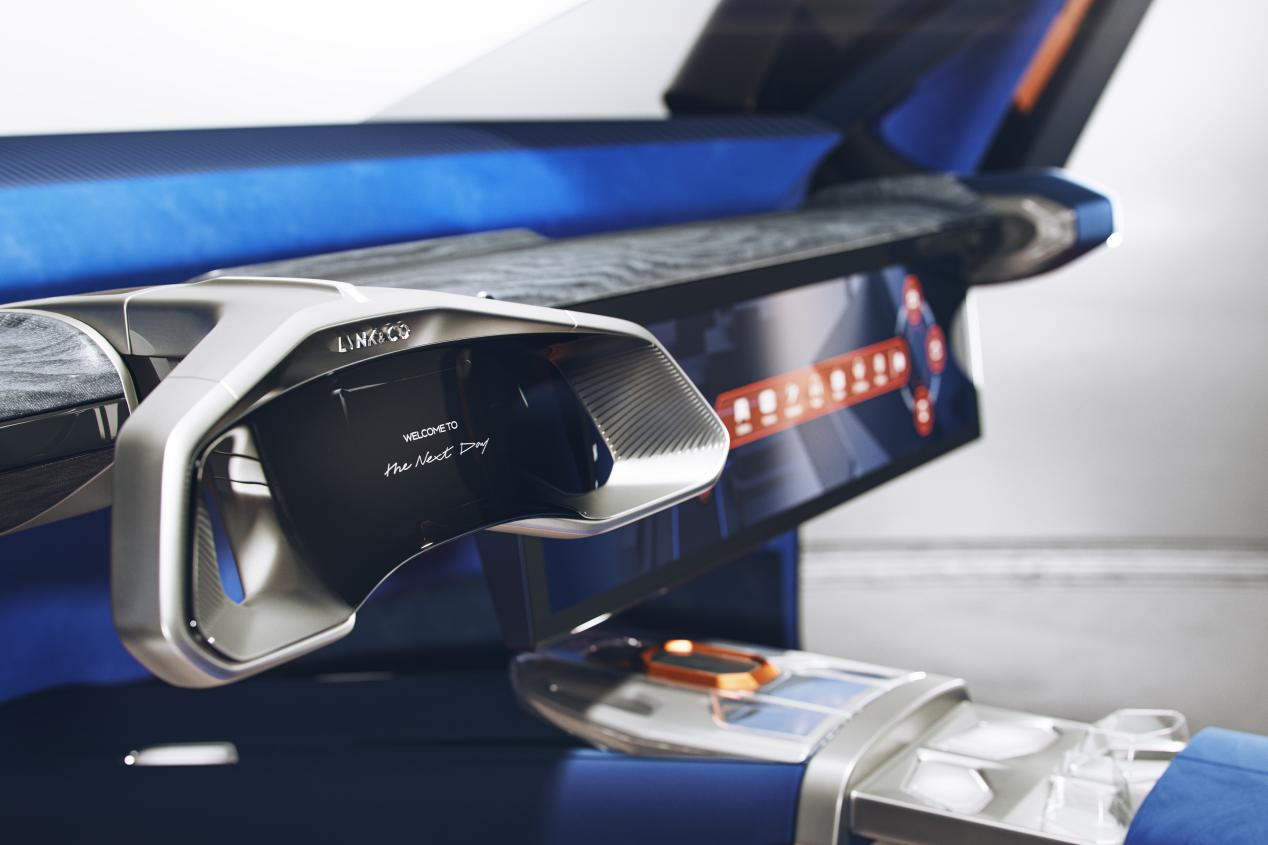
The design language of the concept car blends the sharp and noble elements of black diamonds, the light and shadow changes from sunset to sunrise expressed by the contrast of brightness and darkness, and the metallic lines of technology, displaying a unique urban contrast design aesthetic under the collision between noble and chilly elegance and future technology.
After the release of The Next Day concept car, due to its “striking appearance,” it instantly became popular across the internet, and many netizens have already begun planning to buy it.As the high-end brand under Geely Group, Lynk & Co was created with the advantage of traditional fuel vehicles, and targeted and positioned as intelligent vehicles, fully integrating the technological advantages of fuel and electric, but not falling into the bland hybrid category. From the beginning, Lynk & Co, positioned as a high-end hybrid, is expected to become a pioneer in the hybrid car industry.
It is expected that Lynk & Co will launch four Lynk E-Motive products in succession in 2022, and will introduce three more within two years. By 2025, all Lynk & Co products will be equipped with Lynk E-Motive technology, achieving full electrification.
This article is a translation by ChatGPT of a Chinese report from 42HOW. If you have any questions about it, please email bd@42how.com.
